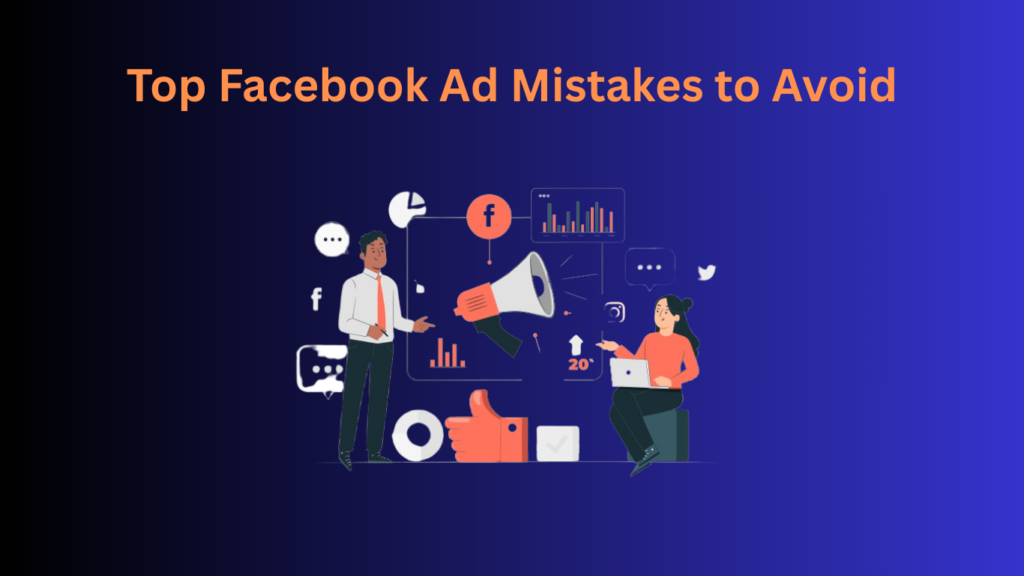Featured Social Media Software:
Facebook Ad Mistakes to Avoid: Targeting the wrong audience leads to wasted impressions; use Facebook’s audience insights to refine demographics. Poor ad copy reduces engagement, so craft compelling messages aligned with user interests. Neglecting A/B testing prevents optimization; test different visuals, copy, and CTAs for better performance. Overlooking mobile optimization affects reach since most users access Facebook via mobile; ensure ads are mobile-friendly for better conversions.
Top Facebook Ad Mistakes to Avoid
Not Defining a Clear Objective
Many advertisers launch Facebook ads without setting a clear goal. Facebook offers objectives like brand awareness, lead generation, and conversions. Selecting the wrong objective decreases performance and wastes ad spend. Aligning objectives with business goals improves results.
How to Fix It:
- Define marketing goals based on business needs.
- Choose the correct Facebook ad objective.
- Align objectives with expected outcomes like engagement or conversions.
- Optimize campaigns for better reach and performance.
Ignoring Audience Targeting
Targeting a broad or irrelevant audience reduces engagement and ROI. Facebook’s targeting options include demographics, interests, behaviors, and lookalike audiences. Poor targeting leads to low conversion rates and high costs.
How to Fix It:
- Use Custom and Lookalike Audiences to refine targeting.
- Segment by demographics, interests, and behaviors.
- Analyze Facebook Insights to optimize audience selection.
- Exclude irrelevant users to improve ad efficiency.
Poor Ad Copy and Creative
Low-quality images, weak messaging, and poor CTAs lower engagement. Inconsistent branding confuses users, reducing trust and conversions. Bland creatives fail to capture audience attention.
How to Fix It:
- Use high-resolution visuals and compelling design elements.
- Write clear, persuasive ad copy focused on audience needs.
- Include strong, action-driven CTAs.
- Maintain consistent branding for recognition and trust.
Not Testing Ad Variations (A/B Testing)
Running a single ad without testing limits optimization. Without variation analysis, performance insights remain unclear. A/B testing identifies high-performing creatives and improves engagement.
How to Fix It:
- Create multiple ad variations with different images, headlines, and CTAs.
- Analyze performance data to determine the best version.
- Optimize creatives and copy based on insights.
Ignoring the Facebook Pixel
The Facebook Pixel tracks user interactions for better targeting. Missing installation leads to inaccurate conversion data and weak retargeting. Proper setup enhances ad efficiency and ROI.
How to Fix It:
- Install the Facebook Pixel on your website.
- Use Events Manager to configure conversion tracking.
- Verify pixel installation with Facebook Pixel Helper.
- Optimize events for accurate performance measurement.
Neglecting Mobile Optimization
Most Facebook users browse on mobile devices. Poorly formatted ads lower engagement and conversions. Mobile-friendly visuals and text improve user experience and visibility.
How to Fix It:
- Ensure ad creatives and landing pages are mobile-friendly.
- Optimize images, text, and CTAs for smaller screens.
- Improve page load speed to reduce bounce rates.
- Use responsive design for seamless user experience.
Setting and Forgetting Campaigns
Some advertisers launch campaigns without monitoring performance. This results in wasted ad spend on low-performing ads. Regular analysis ensures budget efficiency and improved ROI.
How to Fix It:
- Regularly analyze ad performance metrics.
- Adjust bids to optimize cost efficiency.
- Pause underperforming ads to improve ROI.
- Refine audience targeting using demographic and interest data.
Using the Wrong Bidding Strategy
Choosing an incorrect bidding strategy increases costs or limits reach. Automated bidding optimizes spending, while manual bidding provides control. The right strategy ensures cost efficiency.
How to Fix It:
- Align bid strategy with campaign goals.
- Use “Lowest Cost” for maximum conversions.
- Apply “Target ROAS” to optimize return on ad spend.
- Adjust bids based on audience behavior and competition.
Ignoring Negative Feedback and Comments
Ignoring negative feedback lowers ad relevance and engagement. Hidden or reported ads reduce visibility and trust. Addressing concerns improves audience perception and retention.
How to Fix It:
- Monitor audience feedback for engagement patterns.
- Adjust ad targeting based on performance insights.
- Optimize creatives to align with audience preferences.
- Test different formats to improve conversions.
Not Retargeting Website Visitors
Failing to retarget website visitors reduces conversion potential. Users who engaged but didn’t convert can be re-engaged through remarketing. Personalized offers and reminders encourage return visits.
How to Fix It:
- Use retargeting campaigns for website visitors and abandoned cart users.
- Show personalized ads based on past interactions.
- Leverage dynamic product ads to remind users of viewed items.
- Optimize ad frequency to maintain engagement without fatigue.
Conclusion
Avoiding Facebook ad mistakes improves campaign performance. Define clear objectives aligned with business goals. Refine audience targeting for higher engagement. Use high-quality visuals and persuasive copy. Monitor performance metrics to adjust strategies. Leverage Facebook analytics for data-driven decisions. Optimizing ad spend maximizes ROI.
Frequently Asked Questions (FAQs)
What is the most common Facebook ad mistake?
Not defining a clear objective reduces ad performance. Poor audience targeting lowers engagement rates. Weak ad creatives fail to capture attention. Ignoring analytics prevents campaign optimization.
How can I improve Facebook ad targeting?
Use Facebook Audience Insights to refine targeting. Create Custom and Lookalike Audiences. Segment by demographics, interests, and behaviors. Exclude irrelevant users to improve efficiency.
Why is A/B testing important in Facebook ads?
A/B testing identifies high-performing creatives, headlines, and CTAs. It optimizes engagement by analyzing user responses. It reduces cost-per-click (CPC) and boosts return on ad spend (ROAS).
How does the Facebook Pixel help in advertising?
The Facebook Pixel tracks user interactions and optimizes ad delivery. It enhances audience retargeting and improves conversion tracking. It personalizes ad relevance based on user activity data.
What is the best way to increase Facebook ad ROI?
Optimize ad creatives with high-quality visuals and clear messaging. Refine audience targeting using demographics and behaviors. Monitor performance metrics like CTR and conversion rates. Adjust bidding strategies for maximum ROI.
